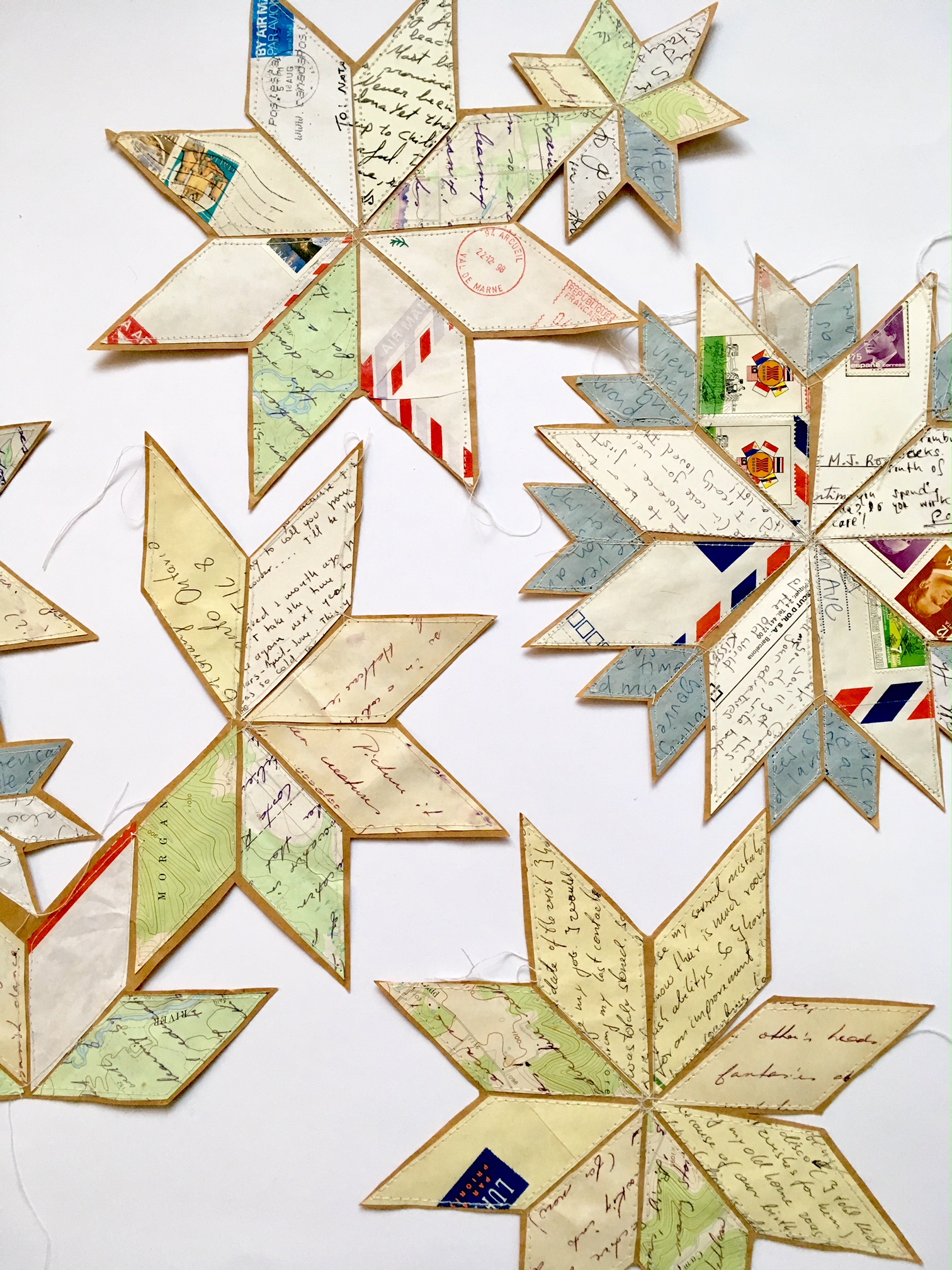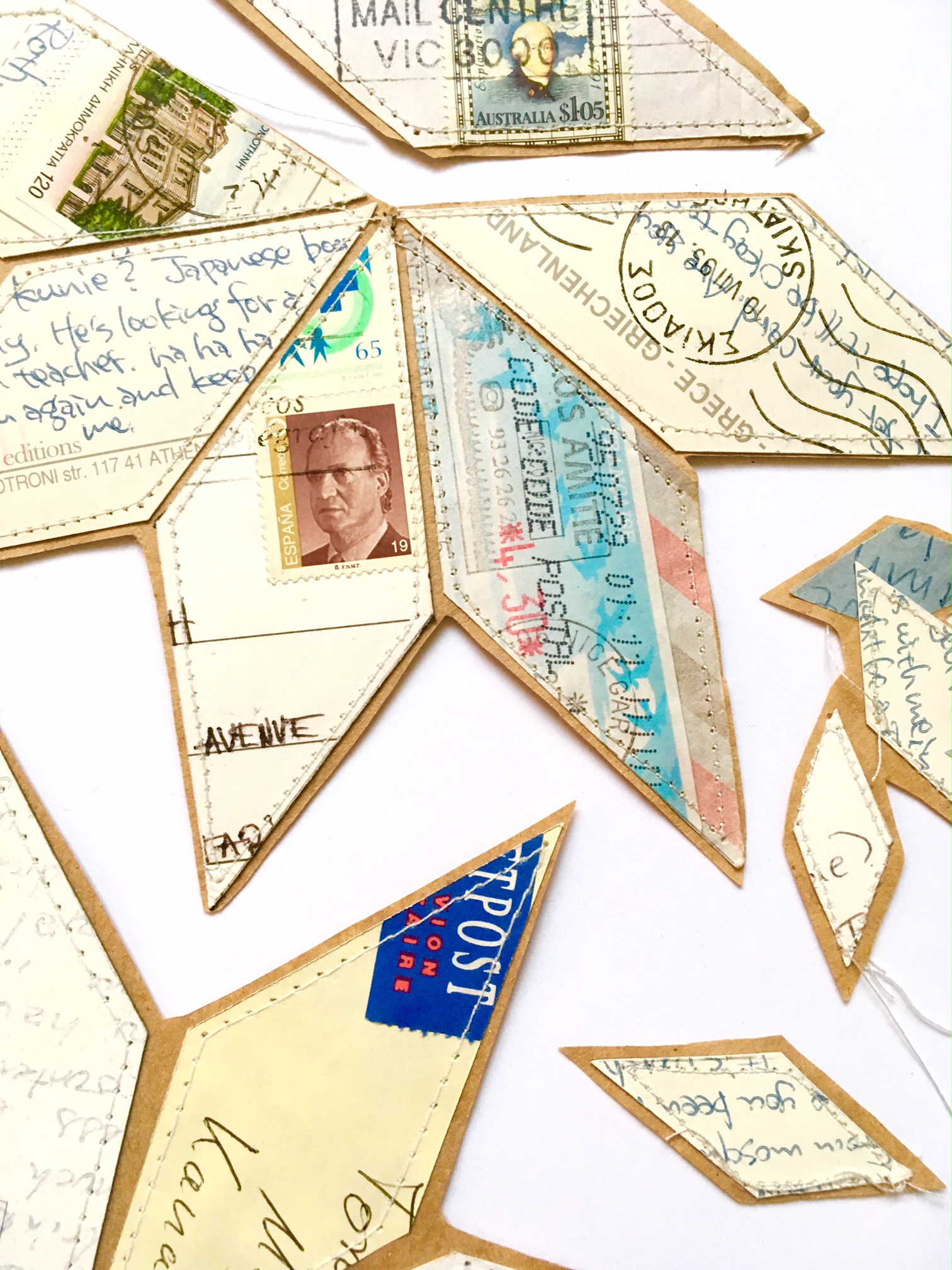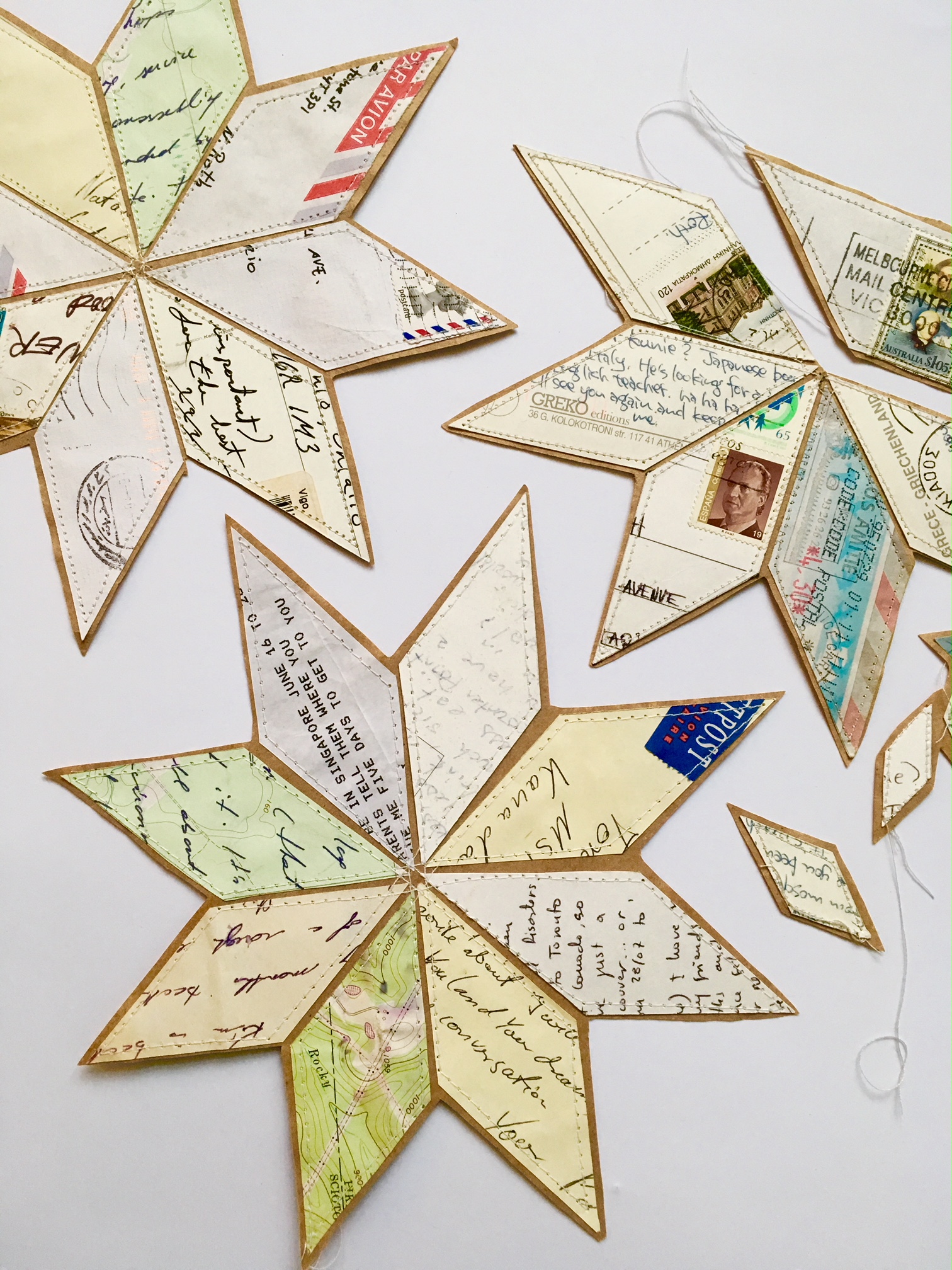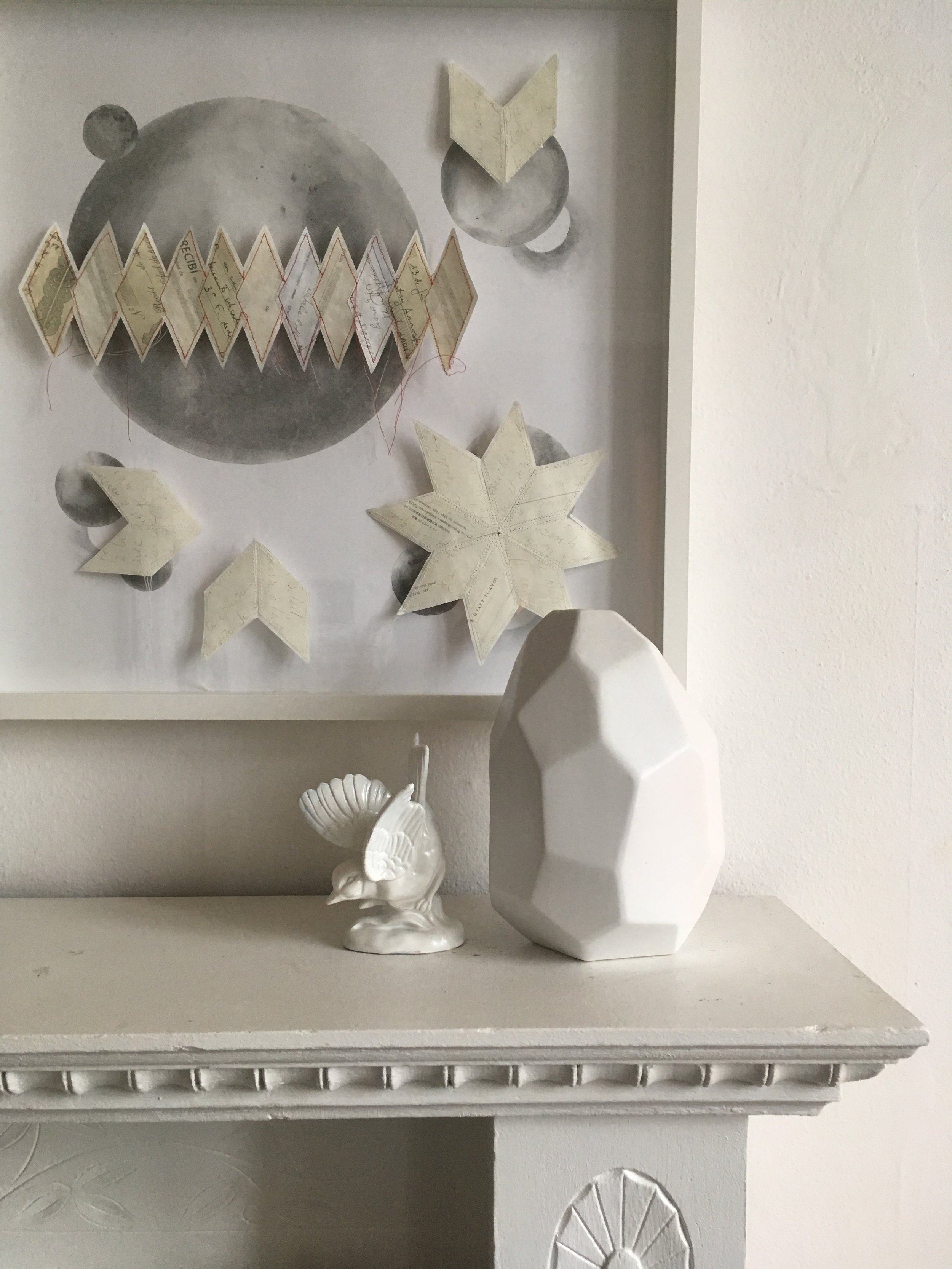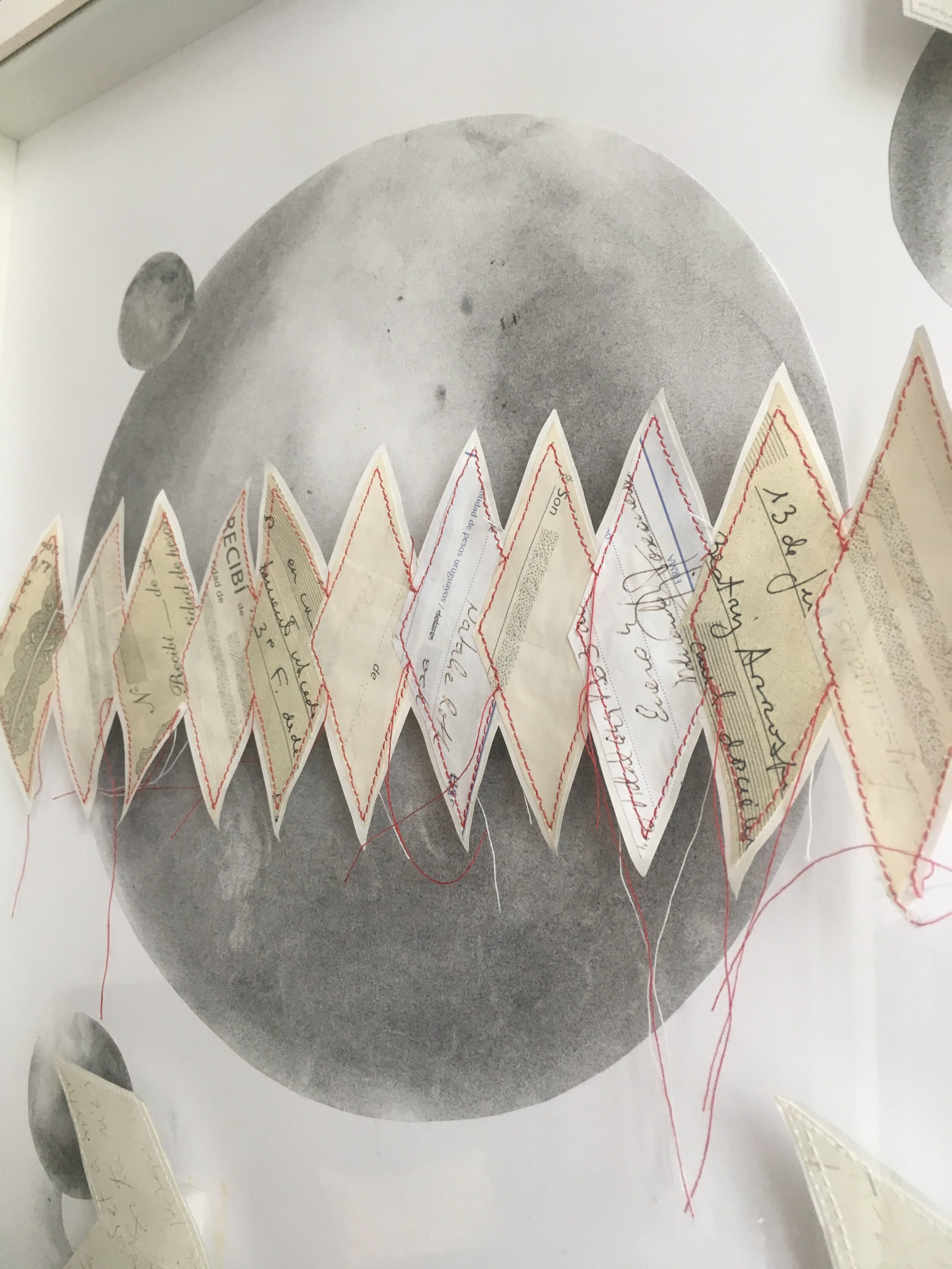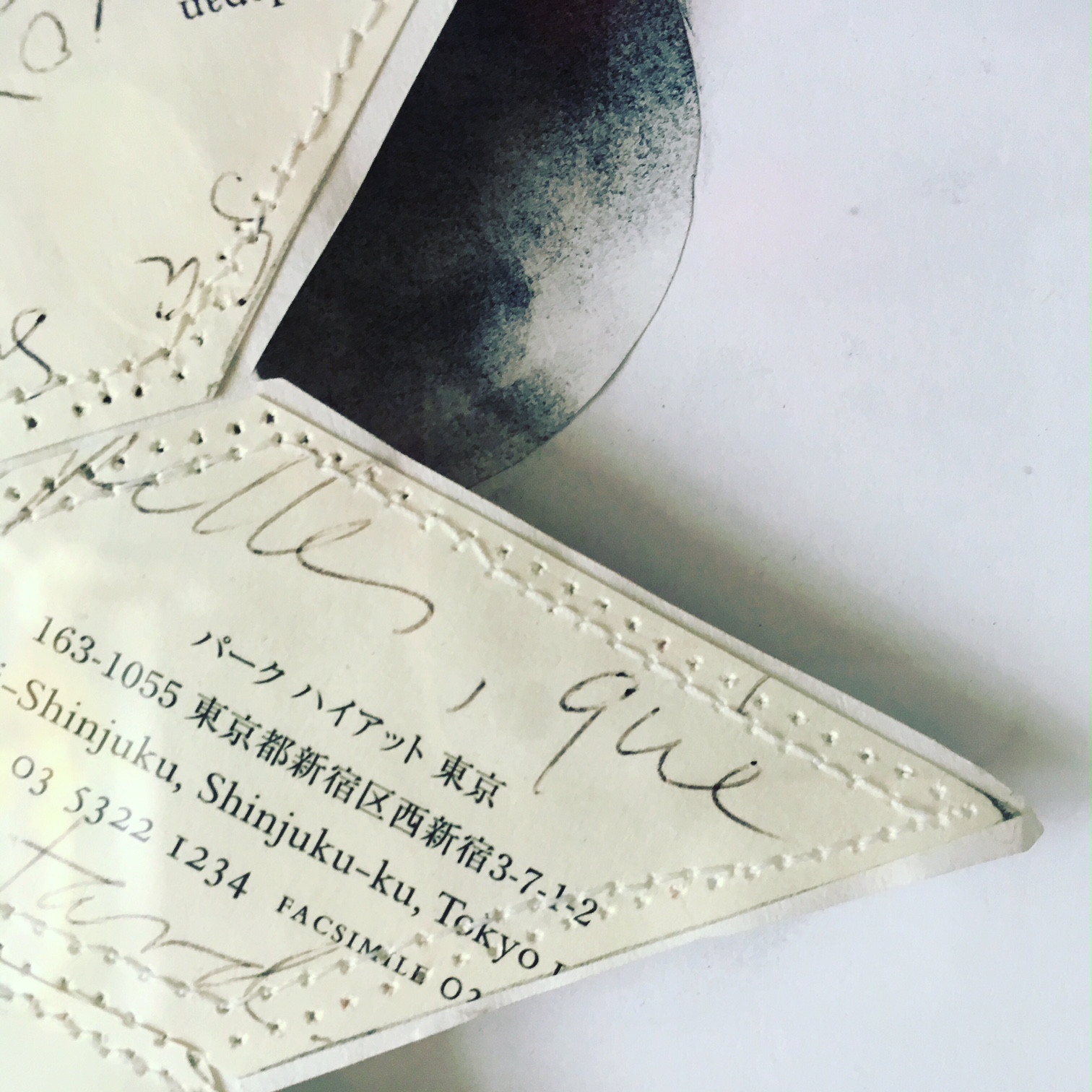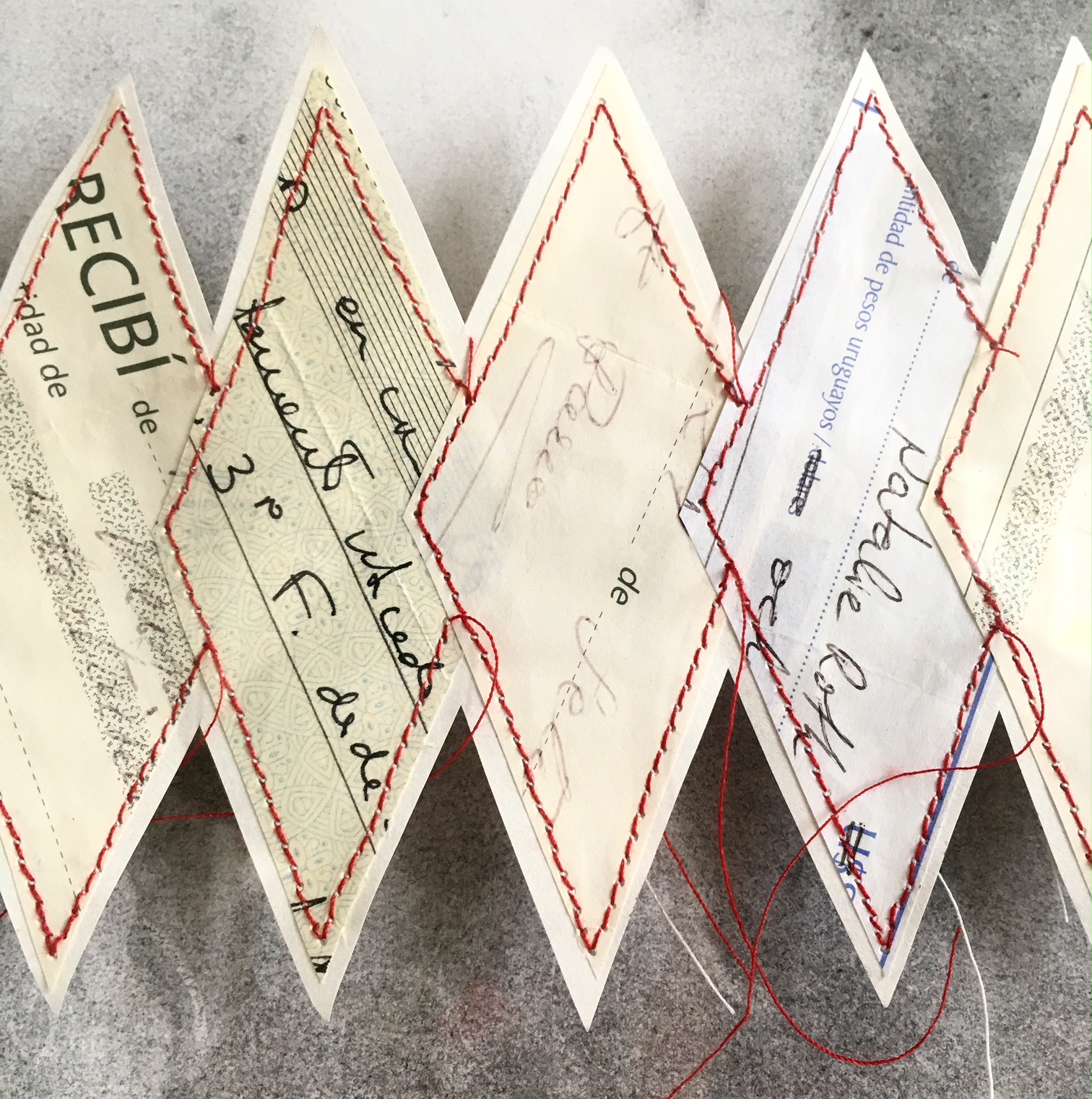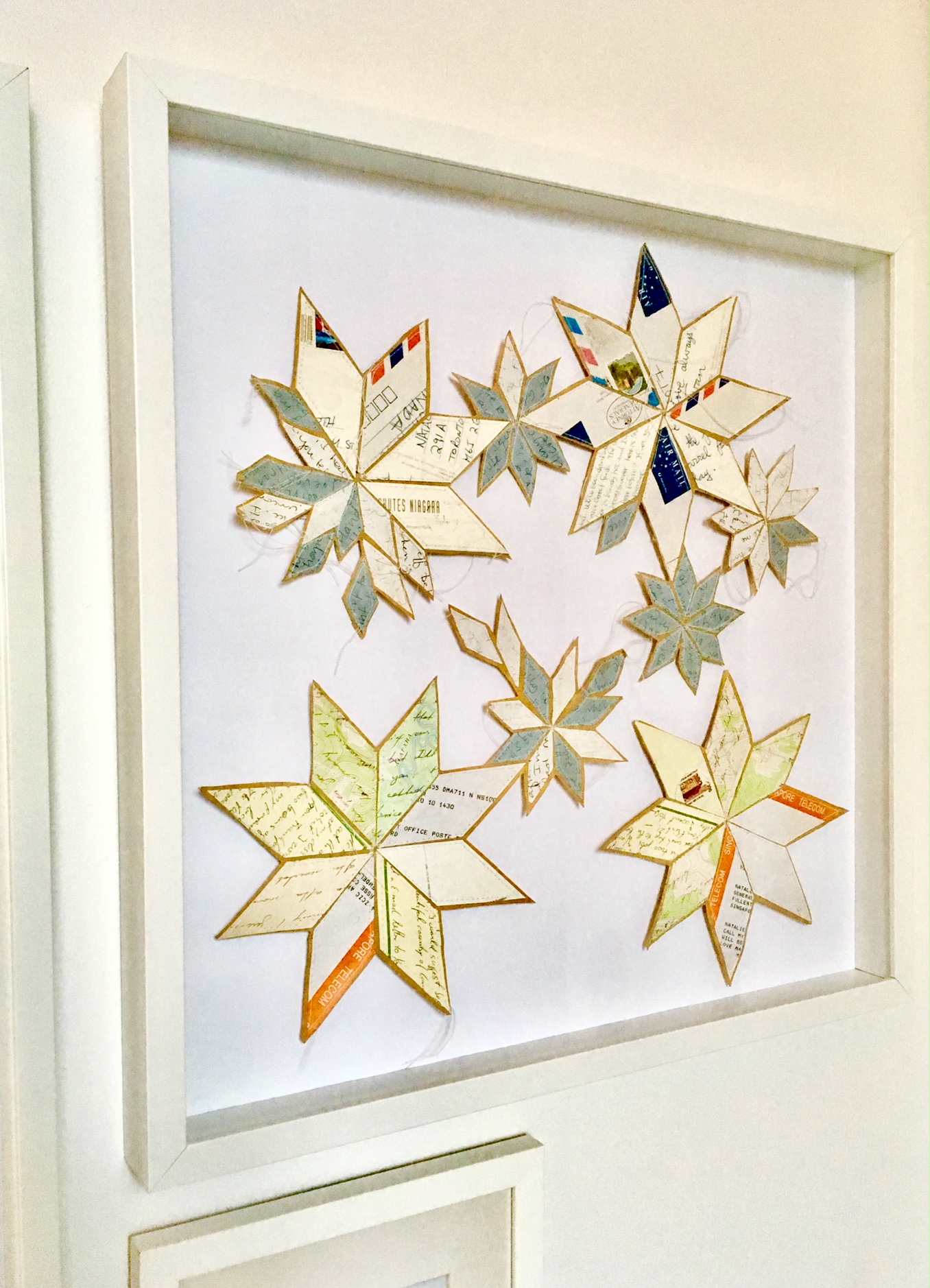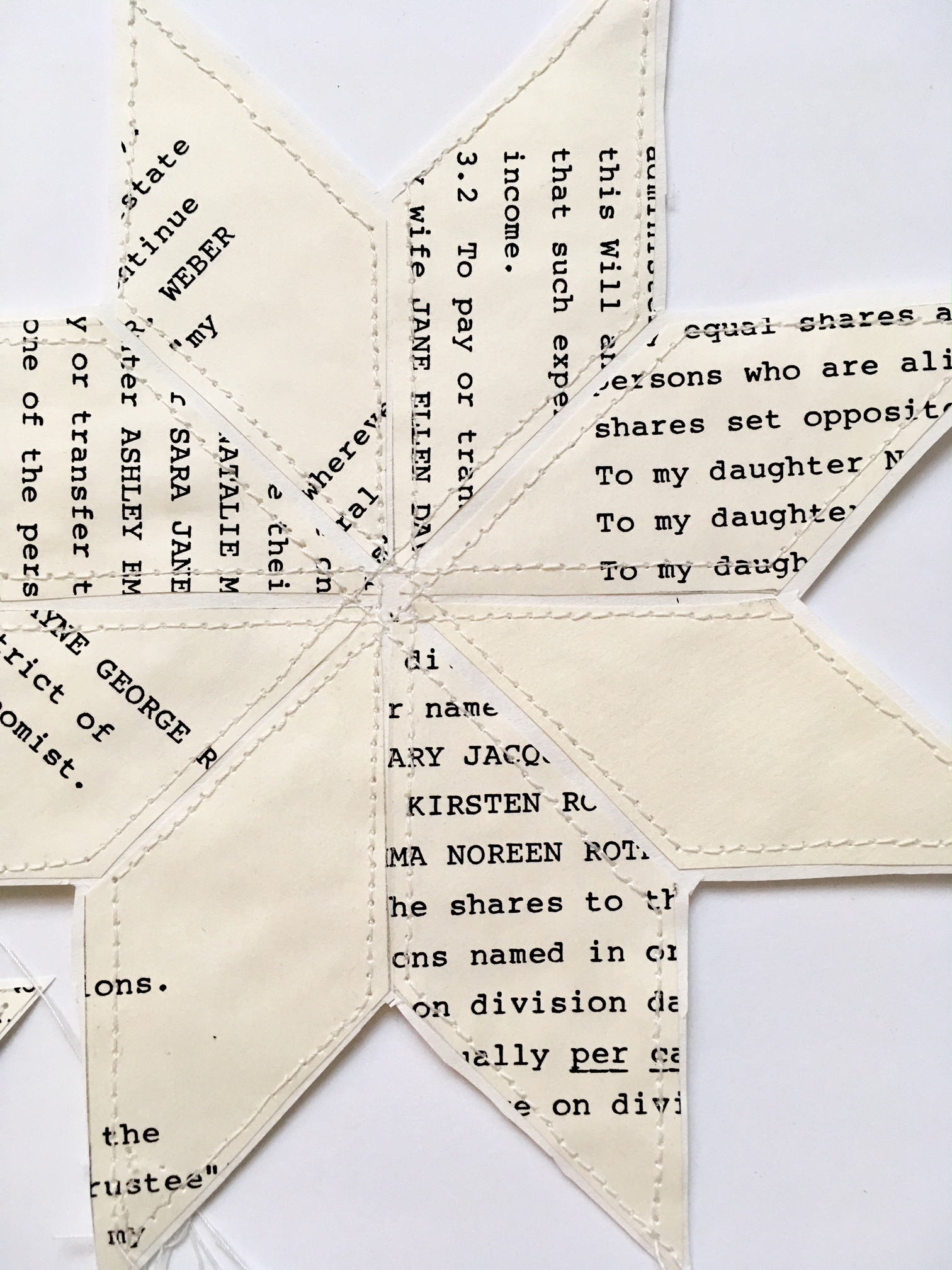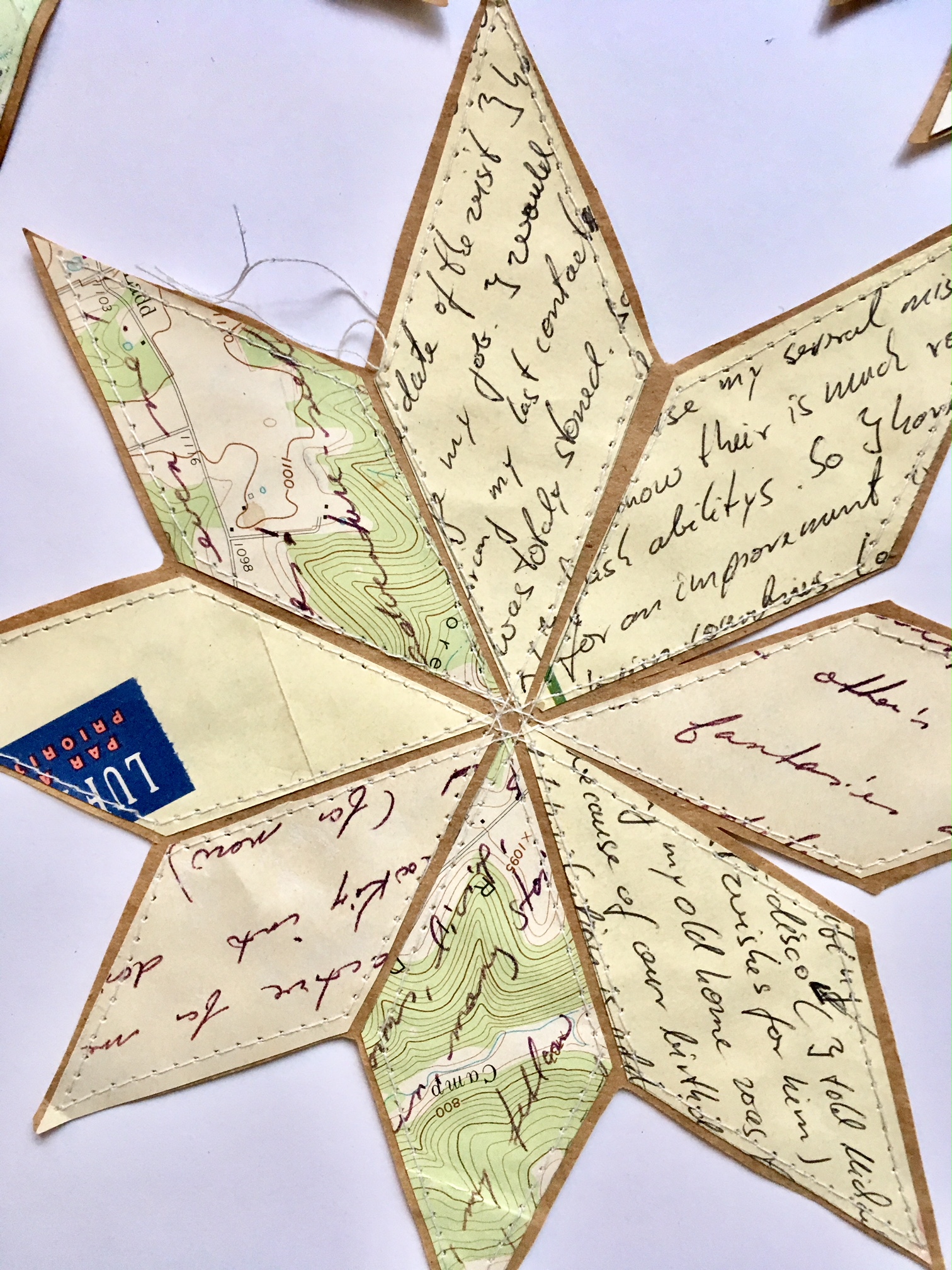Quilted Correspondence is a work in progress that incorporates hand-written letters and traditional quilt-making; the work examines the plans that we make - and break - in life. As well as the patterns and rules we try to abide by.
These re-configured letters are part of an exploration of “valueless” objects, items which acquire positive or negative associations by virtue of the sentiment, memory or intention associated with the object.
The word "quilt" comes from the Latin culcita meaning a stuffed sack but it came into English via the French word cuilte. The earliest known quilted garment is depicted on the carved ivory figure of a Pharaoh from the ancient Eypt (-3400 BC).
Quilting exists in cultures around the world from the Americas to Africa to SE Asia. During American pioneer days, paper quilting became popular. Paper was used as a pattern and each individual piece of cut fabric was basted around the paper pattern. Paper was a scarce commodity in the early American west so women would save letters from home, newspaper clippings, and catalogs to use as patterns. The paper not only served as a pattern but as an insulator. The paper found between the old quilts has become a primary source of information about pioneer life.
Historically, quilting is associated with women and domestic labour, therefore the art and history of quilting has been undervalued and overlooked.
In just one generation, hand-written letters have become an old fashioned relic of correspondence. They represent a slower time when people chose their words with more care. A time when people had to wait weeks - or months - for a penned response to arrive from overseas. The paper and penmanship render each letter a unique reflection of its author. I have always been fascinated with the beauty and significance of a hand-written letter that arrives through the post. I could never bear to throw out old letters and wanted to find a way to honour them. Paper itself is delicate and breathes and wrinkles which reminds me of how our skin ages and tells its own stories.
Ultimately, I began quilting with these letters - instead of fabric. Rather than sewing together scraps of cloth, I have used real letters and other documents from my life, weaving them together to reflect the laborious ways in which we slowly build our relationships, our careers and ultimately our lives.
These letter quilts begin with a traditional pattern - but become waylaid as the quilt grows. The mutating patterns reflect how we may try to navigate life with a master plan in mind, but that template is often disrupted by personal circumstance, chance encounters and global events.
